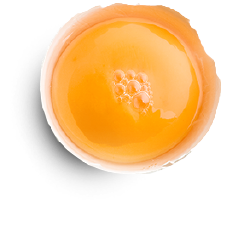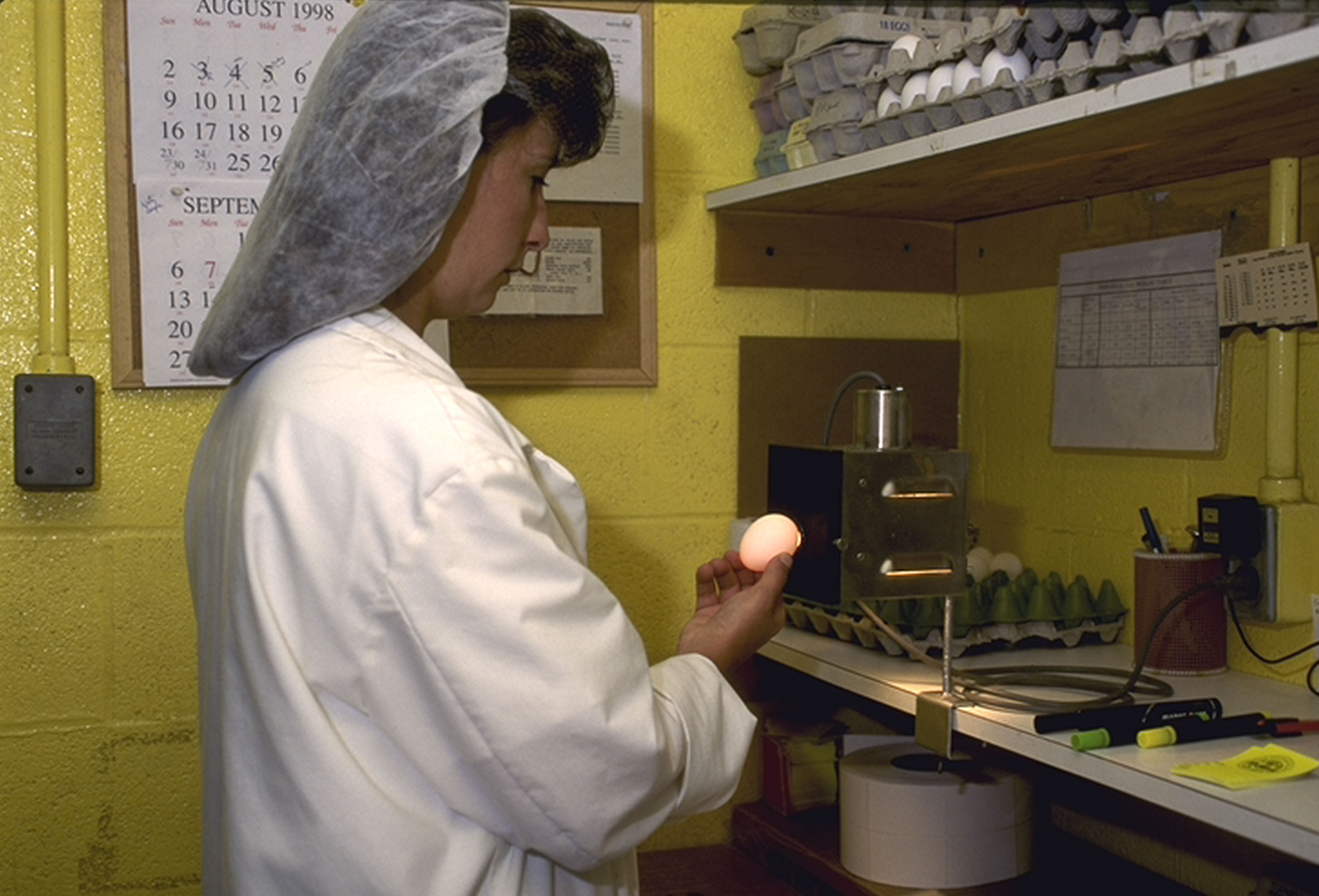Filter By

Eggs – Inside and Out
Producing safe, quality eggs is a complex process and responsibility that egg farmers take very seriously. Egg farms follow strict guidelines to produce safe, healthy eggs and provide care for their hens. On U.S. farms, eggs are typically shipped from the farm within one week of being laid.

Egg farmers follow rigorous biosecurity and cleaning procedures to help prevent disease. After hens lay eggs, they are promptly moved from the laying area into the processing area where they are washed and inspected.
Did you know all eggs are washed under strict regulations to sanitize the eggs? On many farms, eggs are handled by machines instead of human hands to decrease potential damage and exposure to contaminants, though eggs that feature a USDA grade mark on the eggs are visually inspected by USDA officials.
In addition to visual examinations, eggs are candled over a light source that allows defects to become visible. Most eggs with internal irregularities are found through candling and not packed for sale. Here’s a quick guide on some irregularities you may find in eggs, and what to do if you find one:
- Eggs with blood and meat spots are safe to eat when prepared properly. Blood or meat spots are caused by the rupture of a small blood vessel around the yolk at the time of ovulation, or the presence of tissue during egg formation in the hen.
- A double yolk is not only perfectly safe but said to be good luck. Double yolks are usually produced by young chickens whose reproductive systems have not fully matured. Double yolks can also come from older chickens nearing the end of their egg-producing period.
- Some people find an internal irregularity in an egg and wonder if they found an embryo in the egg. Hens that produce eggs commercially never encounter a rooster, so this is not possible.
- A cloudy egg white indicates the egg is exceptionally fresh. The cloudiness is due to the presence of naturally occurring levels of carbon dioxide when an egg is laid.
- Black or green spots inside the egg may be the result of bacterial or fungal contamination of the egg. If you come across an egg with black or green spots discard the egg.
- Off color egg whites, such as green or iridescent colors may be from spoilage due to bacteria. If you come across these colors in an egg white discard the egg.
After the eggs have gone through the inspection process, they! are sized, packaged and transported to restaurants and stores, remaining refrigerated throughout the process, according to FDA regulations.

 Back
Back